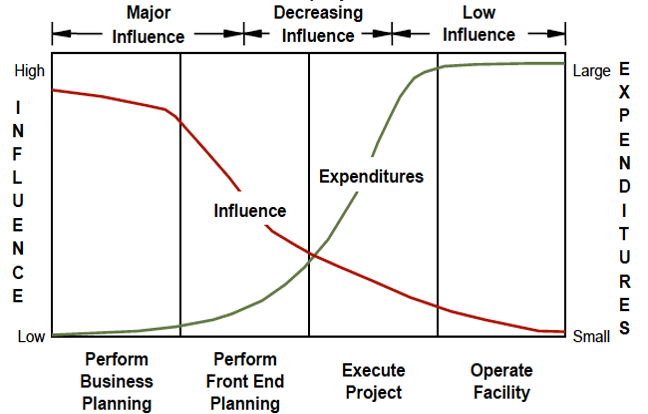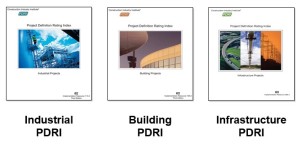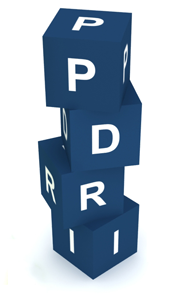At a high level, we know that projects are very dynamic – especially in front end planning. Critical issues and decisions arise throughout a project’s life-cycle. However, it is much easier to influence a project’s outcome during front end planning when expenditure is relatively low, than it is to affect the outcome once a project moves into execution.
The Construction Industry Institute has studied the impact of scope definition on capital projects, and identified a measurable impact on both a cost and schedule, as well as a reduction in change orders.
This correlation exists in all types of projects that have been studied including building, industrial and infrastructure projects.
Front End Planning Critical Success Factors
What are the critical success factors that will allow us to achieve a well defined scope?
Best practices in front end planning show that critical success factors include:
[list type=”check”]- Having a defined front end planning process
- Using tools and resources that will help ensure scope definition is adequate
- Carefully investigating and defining existing site conditions
- Selecting an appropriate contracting strategy early that reflects the risk and uncertainties of the project.
- Alignment of the project, including all key stakeholders, so that everyone is working toward a common goal and shared objectives.
How do we apply this?
With a thorough understanding of both the reasons for poor scope definition and the critical success factors to achieving well defined scope, how do we put this into practice?
The great news is that this is a challenge industry leaders have quietly been addressing for over 20 years with some tremendous results.
The Project Definition Rating Index
The Project Definition Rating Index (PDRI) is a methodology used by capital projects to measure the degree of scope definition during front end planning.
The methodology provides:
[list type=”check”]- a comprehensive review of scope
- it helps project teams identify gaps,
- it supports the project team in taking actions to address gaps
- and most importantly, it helps everyone work together to reduce risk
Origin of PDRI – The Construction Industry Institute
The Construction Industry Institute (CII) is the developer of PDRI. They are a non-profit research organization of more than 140 owners, engineering contractors, suppliers and academic institutions. Their mandate is to create, support and bring best practices in construction and project management to their membership.
Along with supporting their membership, CII is committed to the developing and sharing their best practices with the industry at large.
So how do they do it?…And how can my project team take advantage of these best practices???
Registered Education Provider Program
CII works with Registered Education Providers and implementation specialists like Valency to market and support organizations around the world in their implementation of these best practices.
The purpose of the CII Registered Education Provider Program is to provide member companies and the general public with a qualified corps of instructors who are familiar with CII publications and are available to train on CII Best Practices.
If you’re interested in improving Front End Planning, achieving better scope definition, or getting started with PDRI reach out to us today () or learn more at the PDRI Roadmap to Success page.




